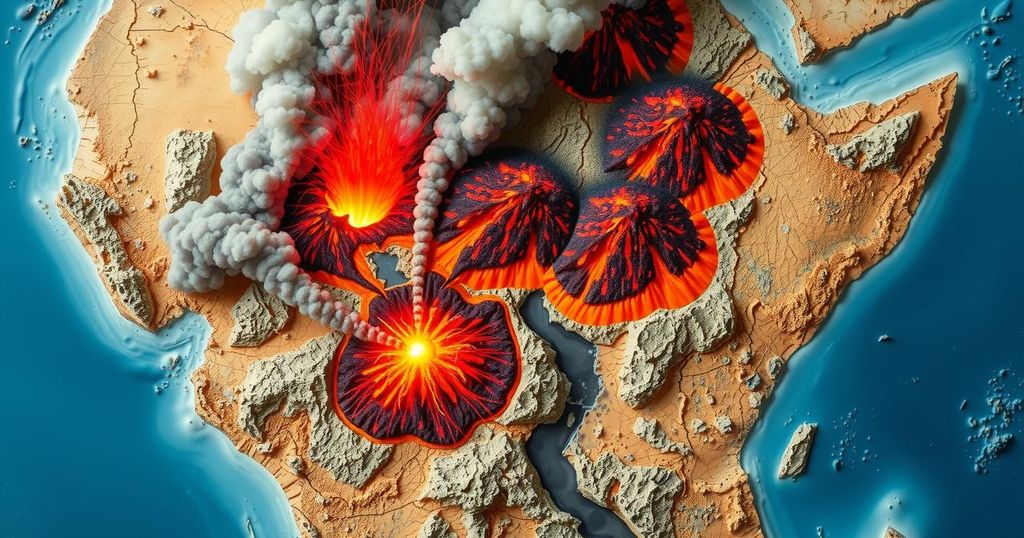Ethiopia is currently facing severe impacts from volcanic eruptions and unprecedented seismic activity, including a strong earthquake recorded near Abomsa and significant structural damage in local communities. Authorities are implementing safety measures to protect displaced residents, while thousands flee affected areas due to widespread destruction.
In the region of Ethiopia, volcanic eruptions and seismic activity are significantly impacting local communities. Recently, a major earthquake, the strongest recorded in the locality, struck 56 kilometers south-southeast of Abomsa. This seismic event followed a magnitude 5.5 earthquake that earlier impacted the region near Awash, which occurred at a depth of 10 kilometers. Consequently, many residents are now facing severe challenges due to structural damages.
Abdulla Ali, the senior administrator of the Gabi Rasu area, reported the implementation of preventative measures aimed at safeguarding local residents, particularly those who have been displaced to temporary shelters owing to extensive damage to their homes. Ali emphasized that the volcanic activity in the region has been preceded by a series of increasing earthquake magnitudes, underscoring a troubling trend in seismic instability over the past week.
Reports from affected communities, particularly in Segento Kebele and Dulecha district close to the Kessem dam and the Kessem sugar factory, indicate considerable damage to infrastructure, including schools and residences. Notably, the Ungaytu school in Sabure Kebele sustained serious harm. Eyewitness accounts from local residents highlight infrastructure deterioration, illustrating cracked pavements and water seeping from fissures in the ground.
Furthermore, the Addis Standard news agency reported that the continual seismic activities around Awash Fentale have led to over thirty structures collapsing, resulting in thousands of residents seeking refuge in neighboring districts. This situation raises serious concerns about the safety and stability of the affected areas, thereby necessitating immediate action from authorities to address the escalating crisis.
Ethiopia is situated within the East African Rift System, making the region particularly susceptible to seismic activities, including both earthquakes and volcanic eruptions. The recent geological events highlight an emerging trend of intensified seismic instability, which has potentially catastrophic consequences on communities, infrastructure, and livelihoods. Historical and geological data indicate that these natural phenomena pose recurring threats to the population living in these geologically active areas, requiring effective disaster preparedness and response measures from local authorities.
In summary, the significant volcanic eruptions and earthquakes impacting the region of Ethiopia highlight a critical need for enhanced safety measures and infrastructure resilience. The collaboration between local authorities and communities is essential in mitigating risks and addressing the aftermath of these geological disturbances. With many residents displaced and local infrastructure severely affected, swift action is necessary to provide relief and prevent further escalations of the crisis.
Original Source: www.plenglish.com






